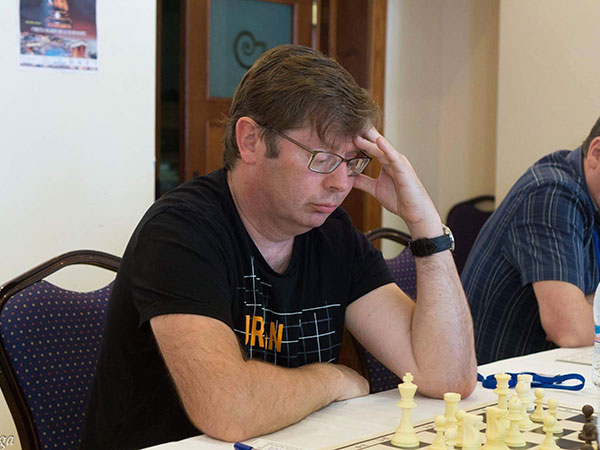


This week's games are by Stephen Homer, a solicitor in his early fifties who lives in Exeter. Married with three children, he played in one of the English teams at the recent World Senior Team Championships in Crete (won imperiously by St. Petersburg ahead of Armenia and England) and is currently rated 2012.
Stephen wrote:
“I'm 54 and I work as a lawyer and live in Devon in SW England. I learnt chess at the age of nine in 1972 (no prizes for guessing the significance of the year) at school in London and at around the age of 13 I joined Wimbledon chess club where I was a contemporary of future British Champion Joe Gallagher.
The next five years were when I really learnt my chess playing for Wimbledon in the London league and in all the London chess congresses, rising to a grade of 182 ECF at the age of 18 (JS = 2056) a grade I only recently bettered!
I then went on to play for Southampton University where I was studying law representing Southampton in the University championships between 1981-1984. In 1989 I met my wife Britta (pictured above in Crete) and coincidentally stopped playing chess for five years.
When Nigel Short played Kasparov in 1993 I watched it on TV, found I could still predict some of the moves and then entered the local chess congress where I was living in Exeter. I've be playing ever since as a keen amateur mostly in Devon and the year before last started playing in the 4NCL for West is Best who I still play for.
My career highlights have to be drawing with Julian Hodgson in a school match, beating Joe Gallagher in the Surrey under 18 championship (sorry Joe), playing for a Wimbledon team that won the London under 21 team championship and qualifying for and playing in the British Chess Championship in 2000 & 2011. I also very much enjoyed playing board one for England III in the World Senior Team Championship 50+ in Crete this year.”
The two games Stephen sent me are an agonising loss against Grandmaster Chris Ward, in which he got a decent position but then faltered and was ground down mercilessly, and a nice attack against an opponent rated almost exactly the same as him. He sent me bare game scores so all the notes are mine and we start with the former.
Click the second game in the list above to view!